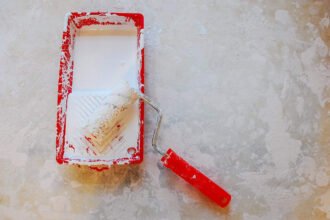Celotex products are used to safeguard numerous structures around the globe. Its innovations and product development are still impacting the construction industry.
What exactly is the Celotex insulation board?
It is a multi-purpose Celotex insulation board that could insulate roofs, sidewalls, and surfaces in various sizes and thicknesses.
What is the composition of Celotex?
Celotex insulation boards are made of PIR (polyisocyanurate), which would be a foam that is used as rigid insulation. This stiff core is often placed between two elevated aluminum foils facings, resulting in a robust, hard-wearing, lightweight insulation board. Performance is excellent while construction or renovation expenditures are kept to a minimum. In addition, the process used to make the boards are gentle on the environment and has a modest impact on climate.
Is Celotex resistant to fire?
There is no entirely fireproof insulation; however, certain insulation boards are “fire-resistant” or “fireproof,” which implies the substance used in them inhibits the fire from spreading. In addition, they are carefully built to withstand high temperatures while emitting no hazardous smoke if they contact flames.
Celotex products will burn if subjected to a sufficiently hot and intense fire. When organic materials are burned, they emit hazardous gasses. Any fire should be battled by qualified firemen equipped with breathing equipment and aware of flammable objects’ presence. Cardboard and plastic packaging materials are also flammable. We recommend keeping the boards away from any potential sources of ignition.
The Advantages of Using Celotex Insulation
The following are the advantages of adopting Celotex insulation:
- Thermal efficiency per mm is higher than that of several other insulating materials.
- Other common PIR producers have a smaller environmental effect.
- A wide selection of products ideal for pitched and flat roofs, walls, and floors.
- Product solutions for new construction as well as upgrades or refurbishments
- Lightweight
- Low heat conductivity allows for lower U-values along with some of the thinnest solutions.
- Leading the industry.
About Celotex
- Although a few individuals use Celotex as a general word for specific insulating boards, it is a top brand for the same company. Therefore, there must come as no surprise that Celotex is among the industry’s greatest names and has been creating high-quality insulating materials for decades.
- Celotex provides insulation solutions for both the residential and commercial markets.
- Celotex insulation boards are used to insulate the roofs, sidewalls, and floors of a house or other structure. These insulation boards are available in various sizes and thicknesses, such as Celotex, which ranges from 12mm to 200mm. It provides budget-friendly insulation, but make sure you choose the right board for your requirements.
- Celotex is widely regarded as the most popular insulation provider and is well-known. Celotex is superior to other providers; however, it depends on what you require and the size necessary.
Is Celotex Harmful to Your Health?
Celotex products are regarded as non-hazardous, with no documented harmful consequences. Inhaling dust, on the other hand, should be prevented. Celotex products must be handled and used in compliance with acceptable industrial hygiene and safety procedures at all times.
Celotex Storage
Celotex insulating boards should be stored dry, flat, and away from direct sunlight. At any given moment, should withdraw just as much material as can be installed in a single working session from storage. When storing boards beneath tarpaulins, shall exercise care to avoid rope damage to the boards.
Installation of Celotex
- Carefully install Celotex insulating boards according to the manufacturer’s instructions.
- Must not put Celotex insulation boards if the temperature is 4°C or lower and decreasing.
- The unprinted foil surface must face the air cavity for optimal thermal performance.
- To reduce dust, cut the product with the Celotex Insulation Saw wherever feasible.
- Dust extraction devices, safety glasses, and face masks should be given when cutting Celotex insulation. Dust or particles in the eyes must be wiped away with copious amounts of water. If you are prone to irritation from fibers, use a barrier lotion to exposed parts before handling.
Recycling and waste management
- Celotex constantly analyses the trash levels generated by its operations and drives and executes measures to decrease the quantity of waste created. In addition, the organizations must make certain that all employees understand the necessity of eliminating waste in all activities.
- Waste PIR is inert and safe for dumps, with no known impact on groundwater. Glass fiber, which is utilized as a core reinforcement in some goods, is nearly totally manufactured from recycled material glass.
- Used a BRE Environmental Profile to examine Celotex’s environmental effect. This profile is the basis for our A+ Green Guide rating. It considers the entire ‘cradle to grave’ effect, comprising raw material acquisition, manufacturing, shipping, efficiency in use, and disposal.
- The Celotex insulation board and bulk of Celotex products are packed without shrink wrap, instead opting for recycled waste such as cardboard bands. Subscribe to this blog to learn more.








